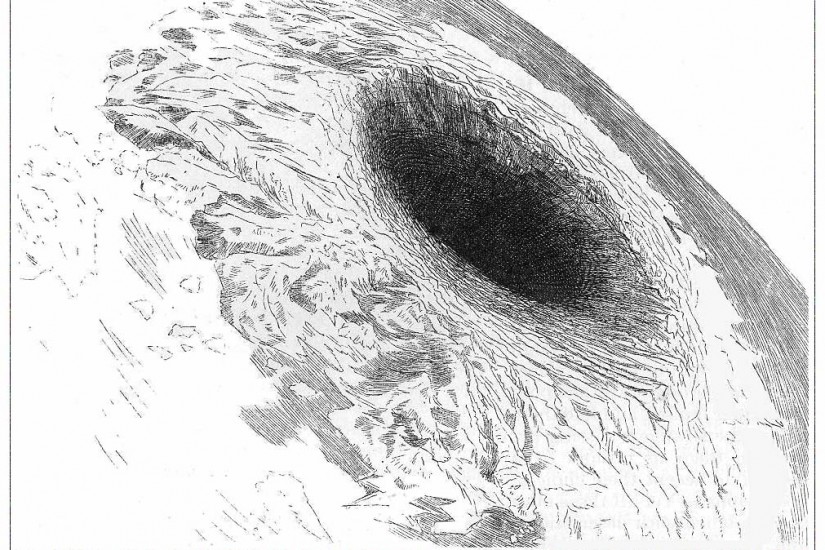Symmes Jr. was a war veteran, but became known not for his military prowess, but instead for his voracious appetite for geographic and scientific study, as well as the theory he developed in response to that study. He only had a grade school education, but he read independently to the point where he could quote the best and most learned scholars of the day and of the past. The only problem was that all of the readings and study he did led him to one conclusion: the Earth as we knew it was less than half discovered, even in the 1800s, because it was actually “hollow and habitable within.” He thought that there was an interior surface of the hollow Earth that was as yet undiscovered by us exterior-Earth dwellers, and he thought it best if we set about finding that land as soon as possible.
Symmes Jr. formed this belief through his years of study and rationalized it with nearly every bit of evidence he could find, bending the explanations of observation to prompt him to feel that he was always on the right track. One example, cited at Time Blimp, is that he saw natural debris and driftwood floating up on shore at beaches as a sign that somewhere, a giant hole was open, allowing things from the interior of the earth to bubble up and show signs of life within. Never mind that the same debris could have come from half a mile upstream during the latest thunderstorm; Symmes Jr. defied the most glaringly simple explanation in favor of a ridiculously complex one. He clearly shaved with a rusty version of Occam’s Razor, which should have created an assumption that a theory that required this much complex working and reworking was probably deeply flawed. However, given that he couldn’t muster up the funding to head north, he allowed misallocation of scientific facts to provide a logical train that derailed frequently but without any loss of confidence.
